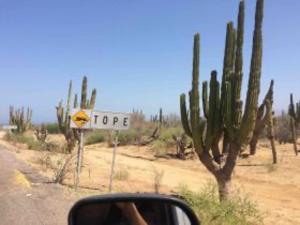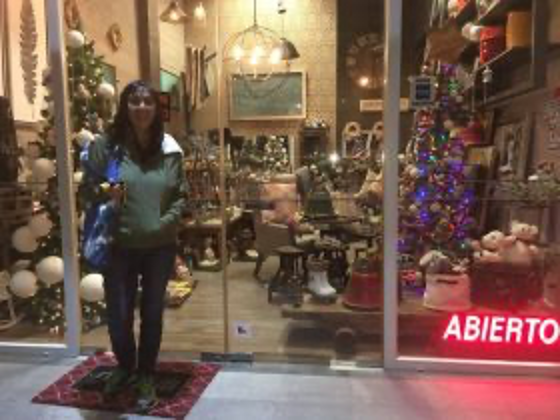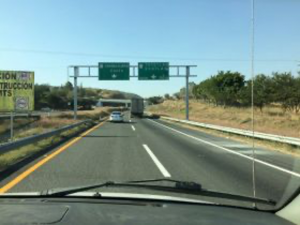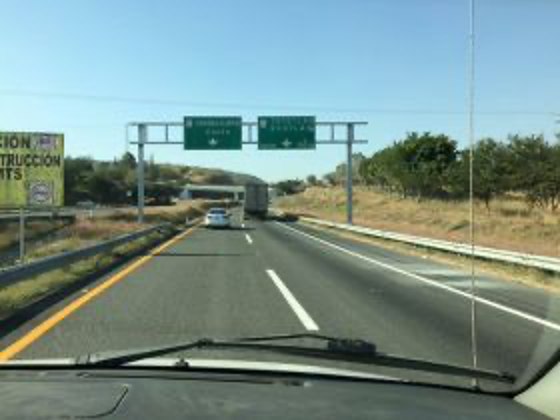 Everyone entering Mexico should do so legally.
Everyone entering Mexico should do so legally.
In order to enter Mexico legally, you will need a visa.
For our purposes, there are three different types of visas:
- Tourist. A Tourist Visa is the kind they give you at the airport or at the border when you go on vacation in Mexico. Generally, they are valid for 180 days, after which you either have to renew your visa or no longer be in Mexico.
- Temporal or Permanente. In order to be granted a Temporal or Permanente visa, you must begin your process at a Mexican consulate outside of Mexico (for our purposes, generally in the US or Canada). As with so many other issues in Mexico, there are laws about who can and cannot qualify, and each consulate and even each employee at each consulate may do it slightly differently. In general, you must provide enough documentation to prove that you have a good reason to be in Mexico for an extended period of time, you’re not a criminal, and that are able to support yourself financially.
If you are accepted for the first phase of obtaining your Temporal or Permanente visa at the Mexican consulate in your home country, they will place a stamp in your passport. From this time, you will have six months in order to start the second phase of obtaining your Temporal or Permanente, which will take place in Mexico at an immigration office (IMN). Once you receive your stamp and you cross into Mexico, immediately go to Immigration in Mexico at the border or airport (not your final home) and tell them you have the stamp. When you do this, they will have you fill out some forms, which will put you into the system. If you don’t do this at the border or at the airport, you’ll have to go back later and do it, so please don’t forget, even if they don’t ask you or remind you, because there’s a 90%+ chance they won’t.
Once you receive your stamp, cross into Mexico and you’re put into the system in Mexico, you then have 30 days in which to begin the second part of receiving your Temporal or Permanente, which will take place at the immigration office near your new home in Mexico. And, once you have your stamp and cross into Mexico, you are not supposed to leave Mexico until the second part of your process is complete. Some immigration offices make exceptions, but these exceptions must be in writing and you can’t ask for an exception after the fact.
Once you begin the second part of the process at IMN near your home in Mexico, it usually takes from three to six weeks to receive your light green plastic card, which will signify that your process of obtaining your residency visa is complete, will make you very happy and relieve you from the requirement of having to carry your passport everywhere. At a high level, it’s really that simple.
For our purposes, there are few differences between the Temporal and Permanente visa:
- The Temporal is good for one year and then renewed in Mexico for three more years, after which you need to get a Permanente or start over, while the Permanente is… well… permanent.
- There are slightly more stringent financial and other requirements for the Permanente as opposed to the Temporal.
- If you have a Temporal, you can drive a foreign-plated car in Mexico, whereas if you have a Permanente, in most places in Mexico, you cannot. (If you’re thinking of driving your US- or Canadian-plated car in Mexico, please read that again.)
- When you sell real estate in Mexico, there are certain tax advantages to be a Permanente.
Regarding moving your household items to Mexico on a Menaje de Casa (which is pretty much how everyone moves their household goods to Mexico and is described later), you will have to have at least started your Temporal or Permanente. If you started your visa process and then voided it by going in and out of Mexico, then you can’t use the Menaje de Casa.
- Determine if you would prefer a Temporal or Permanente visa.
- Find out from the consulate nearest your home NOB (“North of the Border”; the US and Canada) what are the requirements and what you need to bring to get a Temporal or Permanente visa. (Sometimes, it’s on their website, but most of the time, it’s not accurate or up to date.)
- Make your appointment well in advance of you needing your visa. (You will probably have to come back more than once.)
- During your appointment, if you will need to get your Menaje de Casa certified, talk with the person who does it, make sure you understand his or her exact requirements, and make an appointment with that person to present your inventory for certification well in advance of you needing it to be completed. (Reason: you may not have done it right.)
- Get your stamp in your passport.
- When you enter Mexico at the border or at the airport with your stamp, notify the immigration officer so they can put you in the system.
- Within six months of getting your stamp or thirty days after crossing the border (whichever is less), begin the second part of getting your visa in Mexico by visiting the immigration office near your home in Mexico.
- Do not leave Mexico without permission until the process of getting your Temporal or Permanente visa is complete which you will know has happened when you get your light green plastic card.
 While I’m a big fan of immersing one’s self in the local culture for a richer and more meaningful experience, I also understand that, from time to time, you may like to listen to more familiar music, radio talk shows, etc. Many apps do this and most (but not all) will work in Mexico.
While I’m a big fan of immersing one’s self in the local culture for a richer and more meaningful experience, I also understand that, from time to time, you may like to listen to more familiar music, radio talk shows, etc. Many apps do this and most (but not all) will work in Mexico. 


 Even though there are lots of English-speaking people in Mexico, there are extremely few English-language bookstores.
Even though there are lots of English-speaking people in Mexico, there are extremely few English-language bookstores.
 Google translate is pretty good, especially in a pinch. One of its problems (and this seems to be the case with many of the other translation programs as well) is that the Spanish it translates into many times is the Spanish they speak in Spain, which, if you didn’t already know, you will discover can be different than the Spanish spoken in Mexico. That said, Google Translate is much, much better than nothing so it’s very much worth having.
Google translate is pretty good, especially in a pinch. One of its problems (and this seems to be the case with many of the other translation programs as well) is that the Spanish it translates into many times is the Spanish they speak in Spain, which, if you didn’t already know, you will discover can be different than the Spanish spoken in Mexico. That said, Google Translate is much, much better than nothing so it’s very much worth having.
 Everyone entering Mexico should do so legally.
Everyone entering Mexico should do so legally.
 For most areas in Mexico, if you plan on driving your foreign-plated car in Mexico, you must be a
For most areas in Mexico, if you plan on driving your foreign-plated car in Mexico, you must be a 
 After you’ve been in Mexico for a while, you’ll notice that a lot of foreign-plated cars are from South Dakota. For those not “in the know”, this can be a bit puzzling, because with a ranking of 47 out of 50 US states in population, it does seem a bit odd that so many people from South Dakota have moved to Mexico.
After you’ve been in Mexico for a while, you’ll notice that a lot of foreign-plated cars are from South Dakota. For those not “in the know”, this can be a bit puzzling, because with a ranking of 47 out of 50 US states in population, it does seem a bit odd that so many people from South Dakota have moved to Mexico.
 Your NOB (“North of the Border”; the US and Canada) car insurance will not cover you in Mexico, so if you drive in anything other than a rental car in Mexico, you will need to get Mexican car insurance. (When you rent a car in Mexico, typically insurance is included, but make sure to ask.
Your NOB (“North of the Border”; the US and Canada) car insurance will not cover you in Mexico, so if you drive in anything other than a rental car in Mexico, you will need to get Mexican car insurance. (When you rent a car in Mexico, typically insurance is included, but make sure to ask.
 There is a very good chance that you will need to maintain a “legal address” in the US or Canada for all sorts of things, including for credit cards, ATM cards, and banking institutions. You could use your sister-in-law’s, or your good friend’s, or one of the mail forwarding companies.
There is a very good chance that you will need to maintain a “legal address” in the US or Canada for all sorts of things, including for credit cards, ATM cards, and banking institutions. You could use your sister-in-law’s, or your good friend’s, or one of the mail forwarding companies.
 You will be living in Mexico, so you should have at least some pesos in your wallet when you arrive. If you let most NOB banks know well enough in advance, most will exchange your dollars for you so you can have those pesos in your wallet well before you enter Mexico.
You will be living in Mexico, so you should have at least some pesos in your wallet when you arrive. If you let most NOB banks know well enough in advance, most will exchange your dollars for you so you can have those pesos in your wallet well before you enter Mexico.
